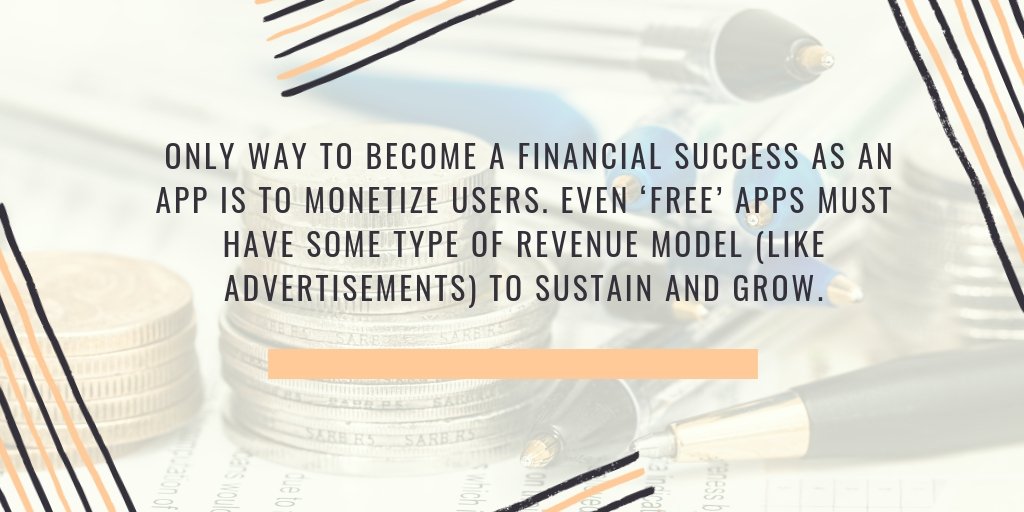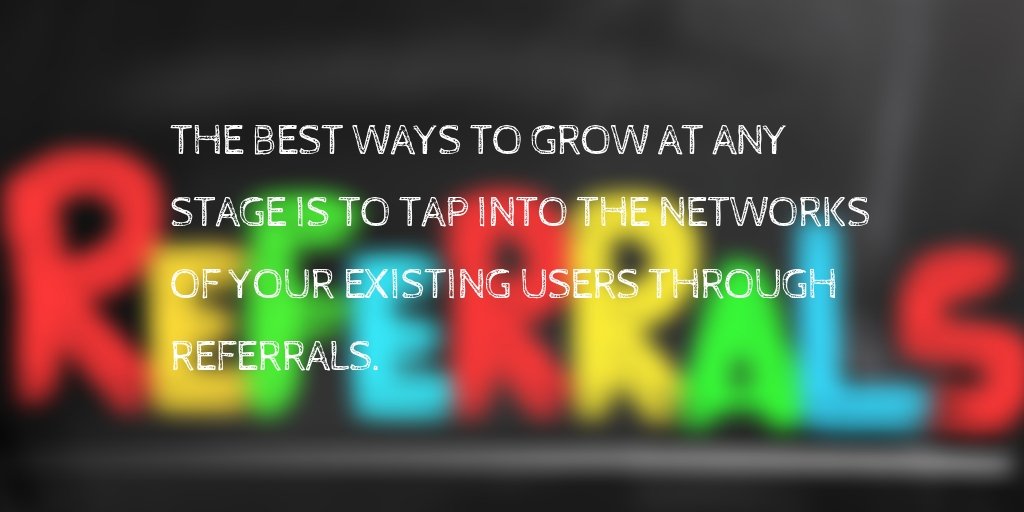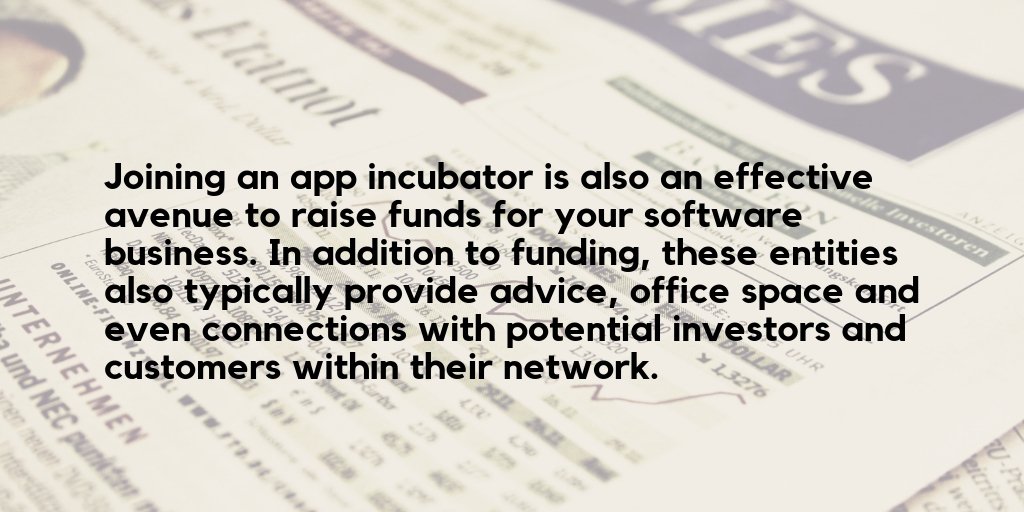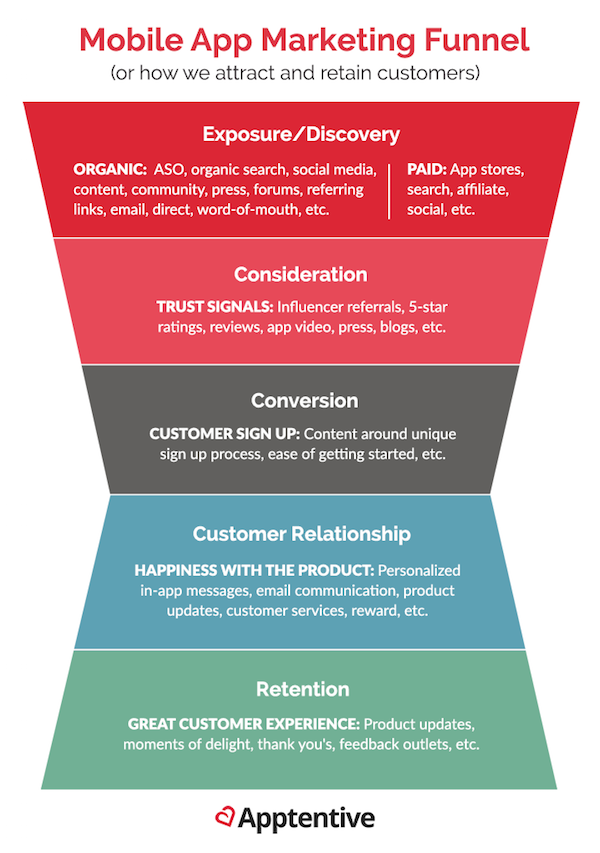The world is full of great app ideas – unfortunately, very few of them will ever reach the App Store. Even with a great business plan, the vast majority of new apps are bound to fail. And for the very few that do manage to survive the first year after launch, only a small fraction will ever reach financial success. According to Gartner, less than .01% of consumer apps that were available in 2014 were expected to become a ‘financial success’ by 2018. Some apps die because they are simply just a bad product-market fit; but often, app startups fail due to the lack of a sustainable startup growth strategy.
Everyone makes a huge deal about apps that made millions in profit, but we rarely hear about the tech companies that are barely surviving. Ken Delaney of Gartner said, “…of paid applications, about 90 percent are downloaded less than 500 times per day and make less than $1,250 a day. This is only going to get worse in the future when there will be even greater competition, especially in successful markets.”
What does this mean for you as an app entrepreneur? It means that to become a dominating app today, you basically need to be a unicorn; and to succeed at all, you must have a strong startup growth strategy that allows you to rise way above the competition.
What Is A Growth Strategy?
Let’s start from the basics. The definition of a growth strategy is a game plan for capturing a wider share of the market. For a more established business, this means diversifying product offerings, expanding into new regions and etc. A new startup however, must take a different approach to growth, first ensuring that they have built the right product and then identifying how to get even the first few users to their app. Another difference is, startups must rely mostly on internal growth strategies while established businesses that have enough resources can tap into external growth strategies for even quicker growth.
What is an internal growth strategy?
An internal growth strategy refers to techniques that grow your business by relying on resources from within the business. These methods involve activities such as improving staff, optimizing marketing, and further developing the product offering.
What is an external growth strategy?
An external growth strategy relies on external measures of growth such as acquiring another business or building a strategic alliance with another brand.

External growth strategies can allow businesses to grow rapidly, but in the beginning, startups typically don’t have the resources needed to successfully implement these techniques. Acquiring technology takes money that startups don’t typically have, and strategic alliances often require a strong brand awareness and a highly-defined product – other attributes that startups don’t typically possess. Instead, startups must implement the right growth strategies at the right time to first acquire early adopters; then to establish the business within the market; and finally to scale wide and expand rapidly.
Startup Growth Strategies for Establishment
While you may envision having a million users on your application, the truth is, securing just the first 1,000 users is quite challenging. In your eyes, the app you’re building may seem like the only solution for the customer problem, but it probably isn’t. Today, there are more app solutions on the market than there has ever been, meaning your consumer has options. According to data by Sensor Tower, by 2020, there will be over 5 million apps active in the App Stores.

When implementing a startup growth strategy, start by attracting enough early adopters to test your solution and ensure that you are building the right product for the market.
Identify Your Market
No matter how you choose to market or advertise your application, you will only succeed if you truly identify what market you are serving and who your consumer really is. One customer group may respond to your marketing efforts much differently than another, and the better you understand the customer – the more effectively you will be able to reach and serve them.

Here are a few ways to identify your target market:
- Consider Your App’s Features: Think about the features that you are developing, and the benefits that relate to each of those features. Then, match them to the type of consumer that needs those benefits most. A productivity app startup for instance, may find that while they can serve a wide range of different businesses, web development teams would be most helped by the specific benefits that their features provide. With this insight, they can optimize their marketing campaign to attract this specific market.
- Analyze Your Competitors: A thorough competitor analysis can provide great insight into which customer groups you should focus your attention on. On one hand, analyzing other apps with similar features will allow you determine what types of customers they are targeting and attracting. On the other hand, you may be able to find customer types that they aren’t focusing on – which may uncover market gaps that your team can take advantage of.
- Develop Your Ideal Customer: Draw up a model of your customer. Give them a name. Write everything you know about them – where do they work, what do they read, how many children do they have, what is their annual income, who do they follow on social media, what type of apps do they download, what types of problems they face, and etc. Learn how they think and how they make decisions. Identify what they don’t like about current products. Again – the more you know about your consumer, the better you will be able to reach and serve them.
- Justify Your Decision: After you have decided on a customer demographic and/or consumer group to target, perform market research to calculate how big the market really is. You will never penetrate the market by 100% and realistically, a successful app will likely only penetrate a small fraction of the total addressable market. If you were only able to secure 1% of your addressable market, would that be enough to sustain your business? Analyze your market thoroughly and determine whether there is enough value in your target market for you to continue to grow without limiting your ability to scale.
Find Early Adopters with an MVP
Launching your minimal viable product will allow you to test your software with early adopters for proof of concept. What is a minimal viable product? According to Techopedia, a MVP is “a development technique in which a new product or
website is developed with sufficient features to satisfy early adopters.” In terms of your app, it means a stripped down software that only includes the features needed to prove that the concept is viable.
Instead of building a full-scale application with a large number of features, launch only the number of features that will allow you to validate your initial assumptions. Then, seek to bring in a handful of users and track how they behave. User behavior will give you the most valuable insight into whether your app solution is meeting the customer need in the way you expected.

How do you find early users? Here are a few tips to help attract early adopters to your solution:
- Join Communities: The great thing about the internet is that like-consumers seem to find each other and organize themselves into awesome little communities. These communities are spread across different forums and even social media sites like Facebook and Reddit. The caveat is that these groups typically hate marketing spam cluttering up their discussions. Don’t approach these communities as a marketer, but become an engaged member of the group by asking and answering questions, and naturally interacting with other members. Once you become known as a valuable member of the community, it will be much easier to tell individuals about your application without seeming like an unscrupulous salesman.
- Launch A Video: A great video has the potential to connect with the emotions of consumers and build wide scale anticipation for your app launch. Create an awesome video that showcases the features and benefits of your application and get it in front of potential viewers. In some cases, a video can be used to measure user interest before a single feature is even developed.
- Social Media Ads: Social platforms like Facebook and Twitter allow you to get your marketing message directly in front of a targeted audience. Since you’ve already listed the demographics of your consumer, choosing the right audience to showcase your ads to should be simple. Continue to optimize your ads for better performance, and it will be much easier to get the ball rolling when you scale later on.
Track Metrics
Now that early adopters are downloading and accomplishing tasks with your application, it is important to track a variety of app metrics to best assess their behavior. Tracking metrics will give you the immediate data you need to determine whether your solution is a good product-market fit or whether it is necessary to pivot your solution. There are many metrics that will come into play at different stages of your business, but here are a few that you should be tracking from day one:
- Number of Users: Is anyone downloading your app? Knowing how many users are downloading your app is the first measure of how well users are responding to your marketing message. If your marketing message is strong and you are showcasing features that truly serve your market’s need, you should be able to convert a good number of those who view your ads into downloaders. An app that is receiving little downloads (compared to marketing efforts) is typically either offering features that consumers aren’t interested in, or aren’t properly presenting valuable features in their marketing campaigns.
- User Retention: It’s important that users are downloading your app, but it’s more important that you’re able to keep them around after you’ve acquired them. If you are successfully acquiring new users but they are only using the app once or twice before they delete it; this is a clear sign that an issue exists. This could mean that users aren’t satisfied once they download the app; or that they find it too confusing to navigate; or even that the app is too buggy for them to use effectively. The longer you are able to retain customers, the more value you will be able to pull out of them in the long run.
- Cost Per Acquisition (CPA): Acquiring new users doesn’t mean much if you are paying more to acquire them than they are worth. For instance, is it worth spending $50 to acquire a customer for a $2.99 app? Probably not. Tracking your cost per acquisition will keep you informed on what it costs to get a single customer to download your application. Once you have dialed in your marketing strategy and have created a great product-market fit, you should be able to improve marketing conversion; reduce your cost per acquisition; and increase your overall profit margin.

Develop Your Product
App development is never complete; and as you continue to learn more about your consumer, your app will morph to better serve the market. An app that never progresses in functionality will eventually reach a market plateau. Think about this – how many times does your smartphone notify you to update apps on your phone? Some of the most popular apps out there like Facebook and Instagram update regularly with new features and abilities.
Don’t make assumptions – use the data that you’ve collected in the previous steps to decide whether you are on the right path, or whether you should pivot your idea to serve your customer better.
Take Groupon for instance. When they first launched, the model was quite different than what it is today. Initially, it was called “The Point”, and was a platform where people could get together to solve problems. After launching a simple WordPress blog and tracking user behavior, the founders realized that what people were really interested in – was grouping together to receive deep discounts on their favorite products and services.
A pivot in strategy based on customer behavior data allowed Groupon to grow into the multi-billion dollar mega platform that it is today.
Product development is necessary across every growth stage. As you further develop your product, you will be able to attract more users, retain them longer, and acquire them at a lower cost.
Startup Growth Strategies
After a product has successfully passed through an initial stage of user testing and all immediate assumptions have been validated, startups can begin widening their startup growth strategy to increase user acquisition, consumer spend and internal capability. The following techniques can be used during this stage to bring an app startup to the next level.
Test Monetization Strategies

The only way to become a financial success as an app is to monetize users. Even ‘free’ apps must have some type of revenue model (like advertisements) to sustain and grow. There are several types of monetization strategies, and finding the right app business model is critical to your growth as a business. Here are a few models you can test to generate the most value from each user:
- Freemium: A basic version of the application is offered for free, but users can access additional features by paying a monthly subscription fee.
- In-app Purchases: The app can be downloaded for free, but some type of virtual goods can be purchased within the app. Mobile games often use this model, allowing users to purchase additional credits, coins or virtual items.
- Advertising: Users can access the application for free, but advertisers are charged to display ads to these users.
- Paid Apps: Users are charged an initial fee to download the application.
Optimize To Convert Better
It’s important to acquire customers, but what’s more important is being able to convert them into paying customers. Unfortunately, startups often don’t pay enough attention to or put enough effort into converting users into customers. According to HubSpot, for every $92 spent acquiring customers, only $1 is spent in converting them. If you can’t convert users into customers, it will be impossible to earn enough revenue to maintain growth. As is the case, it is vital to optimize conversions before scaling your marketing campaign; ensuring that you are growing your revenue potential as you grow your number of users.
While the technique you use will be specific to your individual business, here are several common ways that app entrepreneurs have effectively improved their conversion rates:
- Free Subscription Trials: In some cases, freemium users may not upgrade to paid subscriptions because they don’t understand the value of doing so. Maybe they are able to fully satisfy their need just from the free version, or maybe they are just confused as to whether the upgrade is worth their money. Offering a free month of subscription will allow them to try the upgraded package with no risk, and access additional features without any payment. Apps that offer free trials acquire significantly more sign ups to their paid packages and typically have a much higher conversion rate than apps that do not offer a trial period.
- Discounted In-App Purchases: For apps that sell in-app goods (like mobile games), offering limited time discounts is an extremely effective way of increasing conversions. Games that allow you to buy coins or credits for instance, are known to frequently push notifications to consumers during usage; offering a high number of credits for a discounted price – but only if you capture the deal now. Just like in a convenience store, consumers who engage heavily with mobile games are more likely to buy on impulse when a discount is involved. Furthermore, by offering a discount, you may be able to convert users who would not have purchased otherwise.
- Pricing Optimization: In some cases, users may not purchase larger subscription packages simply because they don’t like the price. Optimizing your pricing is critical – charge too much and users won’t purchase, but charge too little and you may kill your profit margin. Run A/B tests on your packages,
trialling different pricing structures against each other to find the ideal balance between customer value and price. - Feature Optimization: If users don’t find enough value in the additional features offered in upgraded packages, they’ll simply continue to use the free version. Consider the features that you are asking them to pay for, and the ones that you are offering for free. Confirm that there is a considerable value added each time the user upgrades to a higher package; and furthermore, verify that each upgrade helps them solve their problem more effectively than the less-costly or free packages.
Generate Referrals
One of the best ways to grow at any stage is to tap into the networks of your existing users through referrals. According to reports by Nielsen, 92% of consumers trust recommendations from family and friends above all other forms of marketing. No matter what your marketing message is, it is exponentially more effective when your consumer hears it from someone that they trust, as opposed to when they hear it from you as a marketer.

In today’s online world, users love to share- that is, if something is worthy of them sharing with their peers. Take advantage of this by offering user incentives for recommending your app to their friends, family and associates. Referral marketing isn’t just one of the most powerful methods of marketing, it is also the most fruitful. This means that by compelling your users to refer your app, you can acquire several new users for the price of one.
Build Your Team
Don’t underestimate the value of an awesome team. Great strategies bring in valuable users, but it’s the team that forms and implements the strategy. Take an objective and subjective look at your current team – and the skills that they possess. Compare existing skills to those that are really needed to push your startup forward. When you find gaps, fill them in with the right people. As a result, you will strengthen your team, build your internal capacity, and leverage the abilities of other specialists to get to the next level of growth.
Startup Expansion Strategies
At this point, you should have a large number of users, a proven product, a winning marketing strategy, an app business model that converts well and a strong founding team. Now, you should be able to access external resources to expand the application or launch it into new markets. Here are a few techniques that can be added to your startup growth strategy in the expansion stage.
Secure Funding
If you’ve penetrated enough of your initial market with a proven solution – you’ll likely be in a strong position to secure seed funding from an angel investor. Write your app business plan, create an awesome pitch deck and network like crazy.
Pitch your idea everywhere you can and to everybody that will listen. You never know who knows who, and ‘six degrees of separation’ is more real than you could ever imagine.

Joining an app incubator is also an effective avenue to raise funds for your software business. In addition to funding, these entities also typically provide advice, office space and even connections with potential investors and customers within their network.
For more information, check out our article: The Best Ways To Raise Seed Funding For Your App Startup.
Build A Great Marketing Funnel
Unfortunately, not every consumer who needs your app will realize they need it the first time they see your marketing message. At the time they see an ad for your app, they may not yet need the solution; or may not realize that they need the solution; or may not realize that they need your solution. Building a great marketing funnel allows you to capture consumers across all purchasing stages and funnel the most qualified leads into customers.

Fully examine each stage of the marketing funnel and determine whether your funnel best serves the customer at every step. Focus on on strengthening any weaknesses. For example, you may find that you are losing customers in the consideration stage, because when they search your app online they don’t find anyone talking about it. This may mean you need more press or that you need to showcase your app on more online outlets.
As another example, you may find that users downloaded the app but often leave at the sign-up stage because the process is too lengthy or difficult. A strong app marketing funnel ensures that you are able to best serve a customer from the time they discover your app until the day they become a customer – and beyond.
Scale Your Business
Finally, you are in the position to really scale your business. With financial backing and a strong marketing funnel in place, your startup can leverage this foundation to grow even further — and even faster.
There are several ways to expand an app business once it has been proven and validated, such as:
- Seek New Audiences: Once you’ve successfully penetrated your initial target audience, start looking other market sectors that may benefit from your technology. Preferably, look for niche markets that your competitors are not serving – which will give you a major competitive and first mover advantage.
- Penetrate New Locations: Many app startups have realized the extreme advantage in initially targeting one specific location. After you have figured out how to effectively penetrate one particular region, it is highly likely that you can duplicate the same strategy to quickly penetrate new locations. Seek locations that are similar to your launch region – locations where you can reach the same consumer demographic and attract them the same way you did previously.
- Add New Features: Finally, as you are building your user base, you should also continue to seek opportunities to further monetize your existing users. By adding new features and functions to your technology, you can create new revenue streams and add more product value; enticing users to stay on your app longer, return more often, and spend more over their customer lifetime.
A strong startup growth strategy is integral to your success, and if the optimal strategy is followed, you will be able to set yourself apart from the dozens of competitors that you will likely compete against over your journey.
At ThinkLions, we have worked with hundreds of businesses around the world, helping them develop and implement startup growth strategies that win. If you have an awesome app idea or a soon-to-launch app, we’d love to help you develop a step-by-step startup growth strategy and business plan. Contact us today to set up a free consultation with one of our app startup experts.









